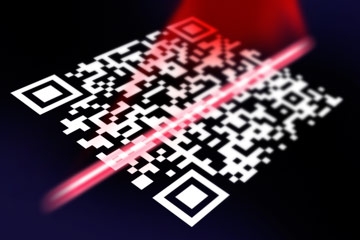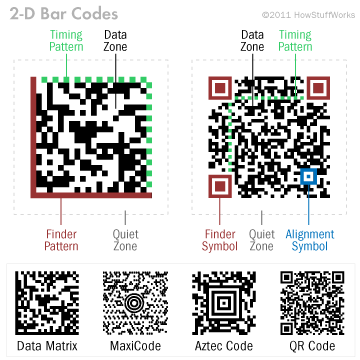In the summer of 1974 at a grocery store in Troy, Ohio, an event first took place that would forever change the way we purchase things: A clerk scanned the UPC code on a pack of Wrigley's gum [source: Collins]. UPC codes exploded in popularity after hitting the market, and today you can find them on practically every product on the shelves. Like all bar codes, UPC codes bridged the physical and digital worlds, providing anyone with a bar code scanner instantaneous access to the data that a bar code contains.
Like all of the first bar code formats, UPC codes were 1-D, meaning they only carried information in one direction. One-dimensional codes worked fine for carrying small amounts of data like numeric product codes, but as the digital world became more complex, the need for a bar code capable of carrying more data became apparent.
One solution still used today is the stacked bar code, which, as the name implies, contain a number of 1-D codes piled one on top of another. Although stacked bar codes can accommodate more information than their traditional 1-D counterparts, they can quickly grow very large in order to store more data and can be difficult to read. In order to have a bar code that was small in size, easy to read and capable of holding both a large amount of data and a large variety of character types, the market called for a new approach. Enter 2-D bar codes.
As you might have guessed, 2-D bar codes (sometimes called matrix codes) carry information in two directions: vertically and horizontally. Accordingly, 2-D bar codes are capable of holding tens and even hundreds of times as much information as 1-D bar codes. For instance, one of the most popular 2-D bar code formats, Denso Wave's QR Code, can hold more than 7,000 digits or 4,000 characters of text, whereas even the most complex 1-D codes top out around 20 characters. 2-D bar codes are also small and easy to scan.
Still, 2-D codes aren't perfect for every application. Because they're more complex than 1-D codes, they require more powerful scanners to decode. What's more, many people are simply unfamiliar with the technology, which hinders widespread adoption. But thanks to the smartphone in your pocket, that may all be about to change. Read on to find out why.



